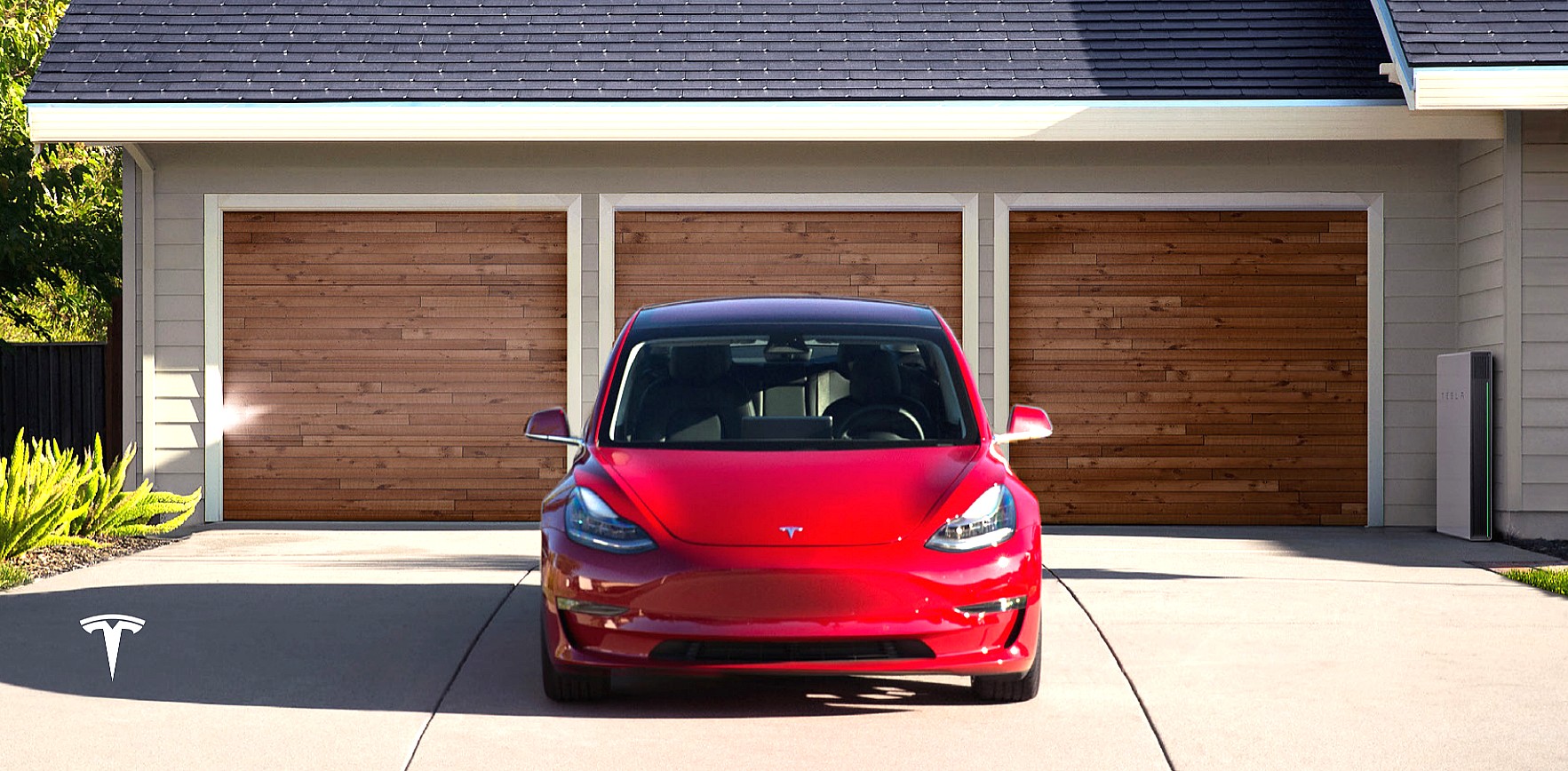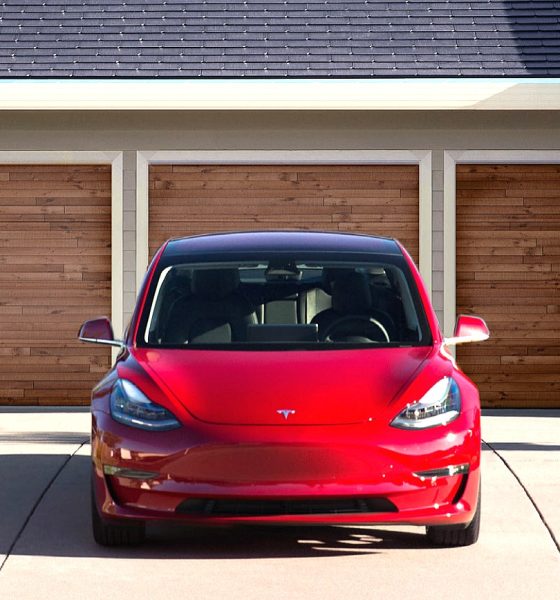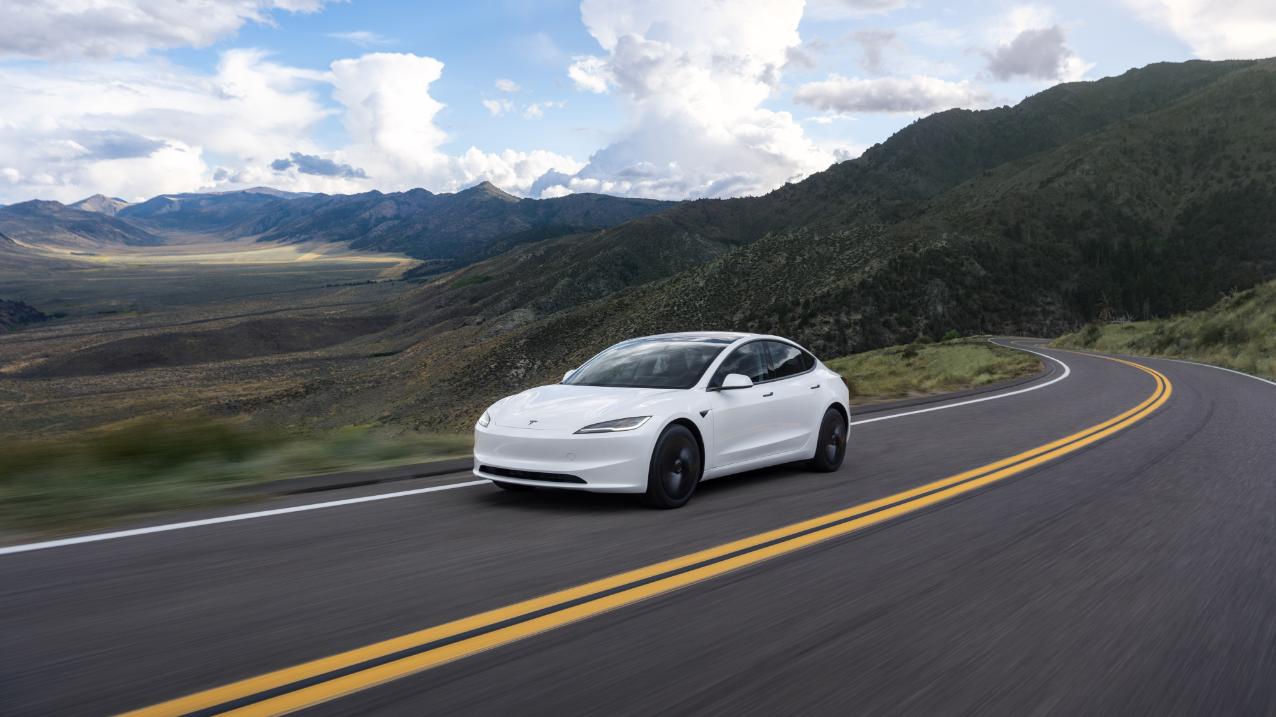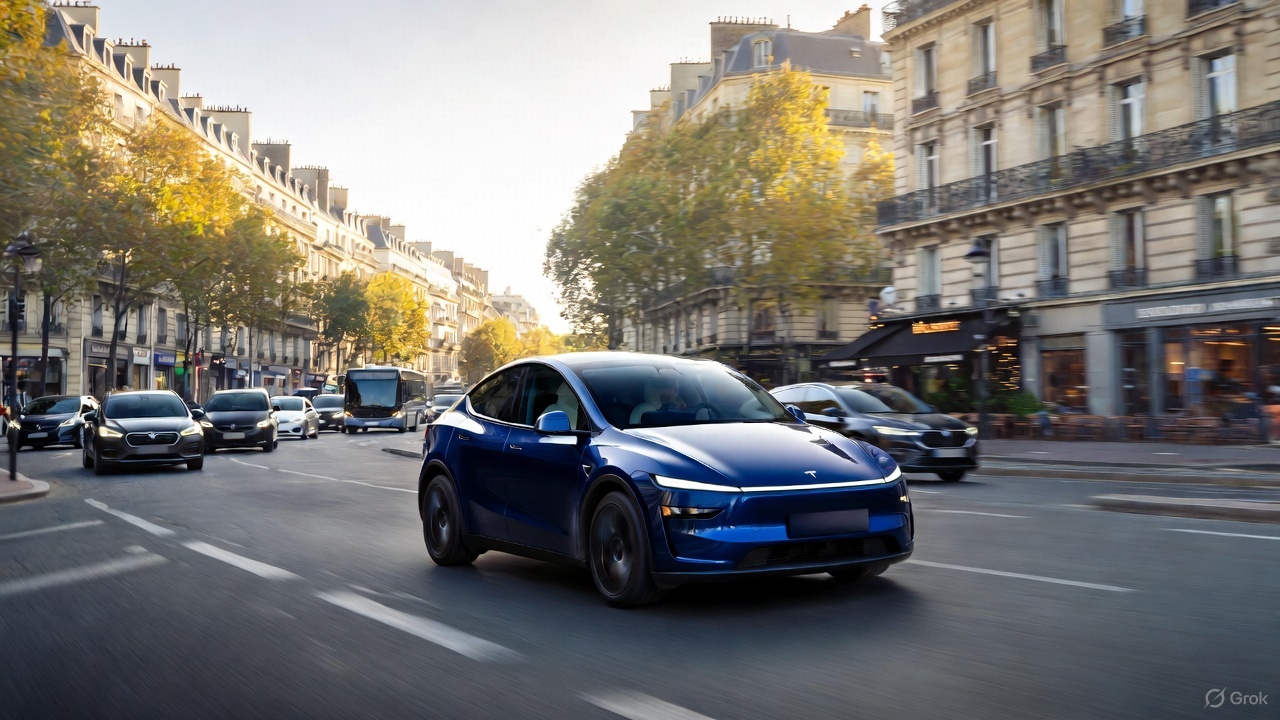

News
Tesla and other EVs’ potential to reduce emissions is widely underestimated: study
There are a lot of misconceptions about electric vehicles, but arguably the most prominent is the argument that EVs pollute more than their internal combustion engine-powered counterparts. Despite being debunked over and over again by people like Tesla CEO Elon Musk and organizations like Bloomberg NEF, the “long tailpipe” myth has remained incredibly persistent.
A recent study from electric mobility expert Auke Hoekstra has concluded that electric vehicles actually have the potential to be far cleaner than expected, especially since battery manufacturing and the power grid will likely not remain static. As the adoption of more efficiencies in battery manufacturing are rolled out and as more and more energy is gathered through renewable sources, the greenhouse gas emissions of electric cars like the Tesla Model 3 will see a dramatic reduction.
The findings of Hoekstra et al. stand in stark contrast to the conclusions of a study published by scientists Christoph Buchal, Hans-Dieter Karl and Hans-Werner Sinn earlier this year, who claimed that a Tesla Model 3 pollutes more than a Mercedes-Benz C 220 d due to the greenhouse gas emissions involved in the production of the electric car’s batteries. This conclusion, according to Hoekstra, has several critical mistakes.
For one, researchers such as Buchal et al. tend to overestimate the emissions produced in the battery manufacturing process. Hoekstra noted that around 65 kg of greenhouse gas emissions is emitted for every kWh of battery produced, which includes extracting and refining raw materials and actually producing the battery cells themselves. Buchal’s study estimated that the Model 3 emits 145–195 kg/kWh for its battery production, which does not take into account new chemistries that are adopted for battery production, or improvements in the cell manufacturing process.
The lifetime of batteries is also grossly underestimated in studies that allege EVs pollute more (or marginally less) than gas cars. In Buchal et al.’s case, for example, the scientists estimated that the Model 3’s batteries would only last 150,000 km (around 93,000 miles) before they are scrapped. This is a miscalculation, considering that current-generation batteries are estimated to last at least 1,500 to 3,000 cycles before they lose 20% of their capacity. For a vehicle like a Tesla Model 3 with Dual Motor AWD, which has a range of 310 miles, this would give the car around 747,000 km (about 464,000 miles) on the low end (1500 cycles) before their batteries would need replacing. And even after this, the batteries are recycled, not discarded, as noted by Elon Musk.
Perhaps the most notable miscalculation from EV critics is that many fail to account for the fact that electricity itself is getting greener with the adoption of renewable energy solutions. Battery-electric vehicles in some areas of the globe might be driving on power generated from coal today, but that will not always be the case. If an EV is driven on renewable energy sources, Hoekstra estimates that the battery-powered vehicles’ emissions would drop by a factor of 10. And that’s computing it using current-generation renewable technology.
The struggle for the future’s preferred form of propulsion will continue to be waged between batteries/electric motors and fossil fuels/internal combustion engine. Yet, it is essential to note that the internal combustion engine is already a mature technology that has likely reached its peak. Battery-powered cars, on the other hand, are only getting started. Heralded by the Model 3, the advent of disruptive vehicles like the new Tesla Roadster, the Rivian R1T pickup, or even the Porsche Taycan could ultimately seal the deal on electricity being the preferred source of propulsion in the years to come.
An Abstract of Hoekstra et al.’s study could be accessed here.

News
Man credits Grok AI with saving his life after ER missed near-ruptured appendix
The AI flagged some of the man’s symptoms and urged him to return to the ER immediately and demand a CT scan.

A 49-year-old man has stated that xAI’s Grok ended up saving his life when the large language model identified a near-ruptured appendix that his first ER visit dismissed as acid reflux.
After being sent home from the ER, the man asked Grok to analyze his symptoms. The AI flagged some of the man’s symptoms and urged him to return immediately and demand a CT scan. The scan confirmed that something far worse than acid reflux was indeed going on.
Grok spotted what a doctor missed
In a post on Reddit, u/Tykjen noted that for 24 hours straight, he had a constant “razor-blade-level” abdominal pain that forced him into a fetal position. He had no fever or visible signs. He went to the ER, where a doctor pressed his soft belly, prescribed acid blockers, and sent him home.
The acid blockers didn’t work, and the man’s pain remained intense. He then decided to open a year-long chat he had with Grok and listed every detail that he was experiencing. The AI responded quickly. “Grok immediately flagged perforated ulcer or atypical appendicitis, told me the exact red-flag pattern I was describing, and basically said “go back right now and ask for a CT,” the man wrote in his post.
He copied Grok’s reasoning, returned to the ER, and insisted on the scan. The CT scan ultimately showed an inflamed appendix on the verge of rupture. Six hours later, the appendix was out. The man said the pain has completely vanished, and he woke up laughing under anesthesia. He was discharged the next day.
How a late-night conversation with Grok got me to demand the CT scan that saved my life from a ruptured appendix (December 2025)
byu/Tykjen ingrok
AI doctors could very well be welcomed
In the replies to his Reddit post, u/Tykjen further explained that he specifically avoided telling doctors that Grok, an AI, suggested he get a CT scan. “I did not tell them on the second visit that Grok recommended the CT scan. I had to lie. I told them my sister who’s a nurse told me to ask for the scan,” the man wrote.
One commenter noted that the use of AI in medicine will likely be welcomed, stating that “If AI could take doctors’ jobs one day, I will be happy. Doctors just don’t care anymore. It’s all a paycheck.” The Redditor replied with, “Sadly yes. That is what it felt like after the first visit. And the following night could have been my last.”
Elon Musk has been very optimistic about the potential of robots like Tesla Optimus in the medical field. Provided that they are able to achieve human-level articulation in their hands, and Tesla is able to bring down their cost through mass manufacturing, the era of AI-powered medical care could very well be closer than expected.
News
Tesla expands Model 3 lineup in Europe with most affordable variant yet
The Model 3 Standard still delivers more than 300 miles of range, potentially making it an attractive option for budget-conscious buyers.

Tesla has introduced a lower-priced Model 3 variant in Europe, expanding the lineup just two months after the vehicle’s U.S. debut. The Model 3 Standard still delivers more than 300 miles (480 km) of range, potentially making it an attractive option for budget-conscious buyers.
Tesla’s pricing strategy
The Model 3 Standard arrives as Tesla contends with declining registrations in several countries across Europe, where sales have not fully offset shifting consumer preferences. Many buyers have turned to options such as Volkswagen’s ID.3 and BYD’s Atto 3, both of which have benefited from aggressive pricing.
By removing select premium finishes and features, Tesla positioned the new Model 3 Standard as an “ultra-low cost of ownership” option of its all-electric sedan. Pricing comes in at €37,970 in Germany, NOK 330,056 in Norway, and SEK 449,990 in Sweden, depending on market. This places the Model 3 Standard well below the “premium” Model 3 trim, which starts at €45,970 in Germany.
Deliveries for the Standard model are expected to begin in the first quarter of 2026, giving Tesla an entry-level foothold in a segment that’s increasingly defined by sub-€40,000 offerings.
Tesla’s affordable vehicle push
The low-cost Model 3 follows October’s launch of a similarly positioned Model Y variant, signaling a broader shift in Tesla’s product strategy. While CEO Elon Musk has moved the company toward AI-driven initiatives such as robotaxis and humanoid robots, lower-priced vehicles remain necessary to support the company’s revenue in the near term.
Reports have indicated that Tesla previously abandoned plans for an all-new $25,000 EV, with the company opting to create cheaper versions of existing platforms instead. Analysts have flagged possible cannibalization of higher-margin models, but the move aims to counter an influx of aggressively priced entrants from China and Europe, many of which sell below $30,000. With the new Model 3 Standard, Tesla is reinforcing its volume strategy in Europe’s increasingly competitive EV landscape.
News
Tesla FSD (Supervised) stuns Germany’s biggest car magazine
FSD Supervised recognized construction zones, braked early for pedestrians, and yielded politely on narrow streets.

Tesla’s upcoming FSD Supervised system, set for a European debut pending regulatory approval, is showing notably refined behavior in real-world testing, including construction zones, pedestrian detection, and lane changes, as per a recent demonstration ride in Berlin.
While the system still required driver oversight, its smooth braking, steering, and decision-making illustrated how far Tesla’s driver-assistance technology has advanced ahead of a potential 2026 rollout.
FSD’s maturity in dense city driving
During the Berlin test ride with Auto Bild, Germany’s largest automotive publication, a Tesla Model 3 running FSD handled complex traffic with minimal intervention, autonomously managing braking, acceleration, steering, and overtaking up to 140 km/h. It recognized construction zones, braked early for pedestrians, and yielded politely on narrow streets.
Only one manual override was required when the system misread a converted one-way route, an example, Tesla stated, of the continuous learning baked into its vision-based architecture.
Robin Hornig of Auto Bild summed up his experience with FSD Supervised with a glowing review of the system. As per the reporter, FSD Supervised already exceeds humans with its all-around vision. “Tesla FSD Supervised sees more than I do. It doesn’t get distracted and never gets tired. I like to think I’m a good driver, but I can’t match this system’s all-around vision. It’s at its best when both work together: my experience and the Tesla’s constant attention,” the journalist wrote.
Tesla FSD in Europe
FSD Supervised is still a driver-assistance system rather than autonomous driving. Still, Auto Bild noted that Tesla’s 360-degree camera suite, constant monitoring, and high computing power mark a sizable leap from earlier iterations. Already active in the U.S., China, and several other regions, the system is currently navigating Europe’s approval pipeline. Tesla has applied for an exemption in the Netherlands, aiming to launch the feature through a free software update as early as February 2026.
What Tesla demonstrated in Berlin mirrors capabilities already common in China and the U.S., where rival automakers have rolled out hands-free or city-navigation systems. Europe, however, remains behind due to a stricter certification environment, though Tesla is currently hard at work pushing for FSD Supervised’s approval in several countries in the region.








